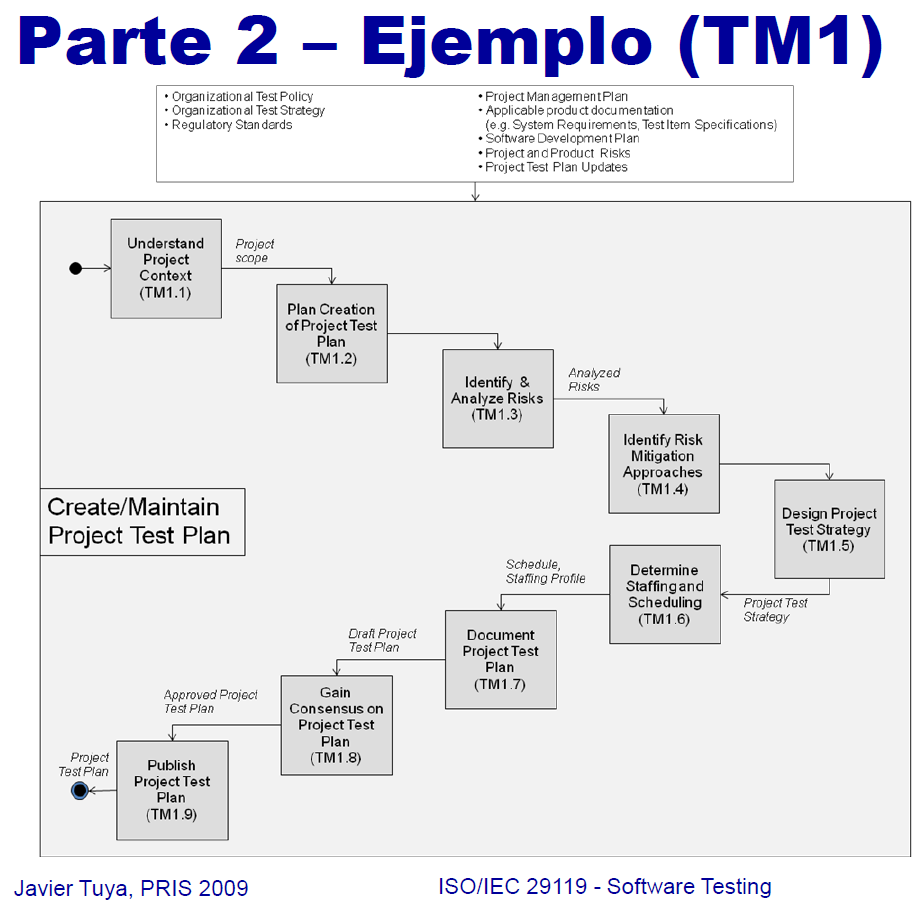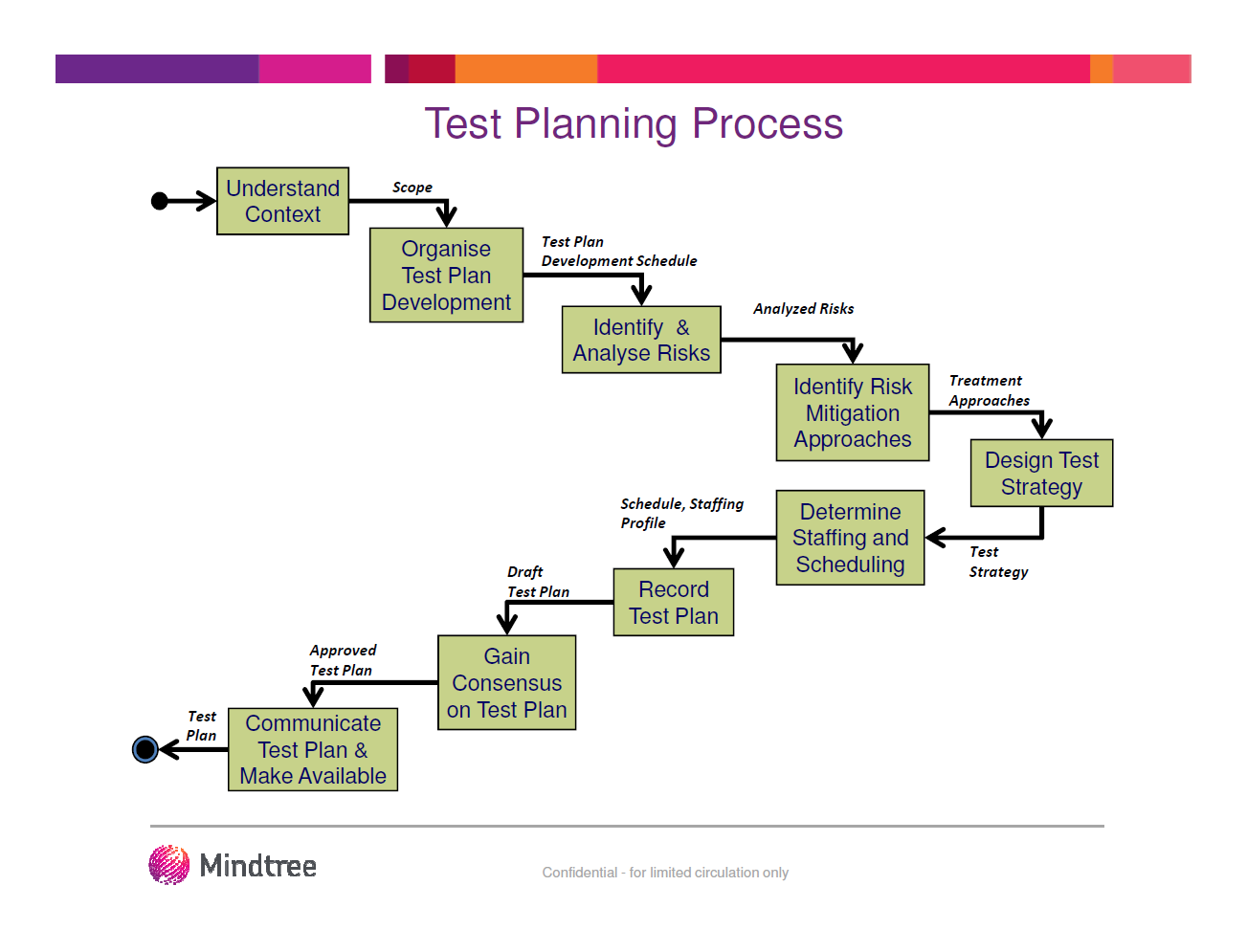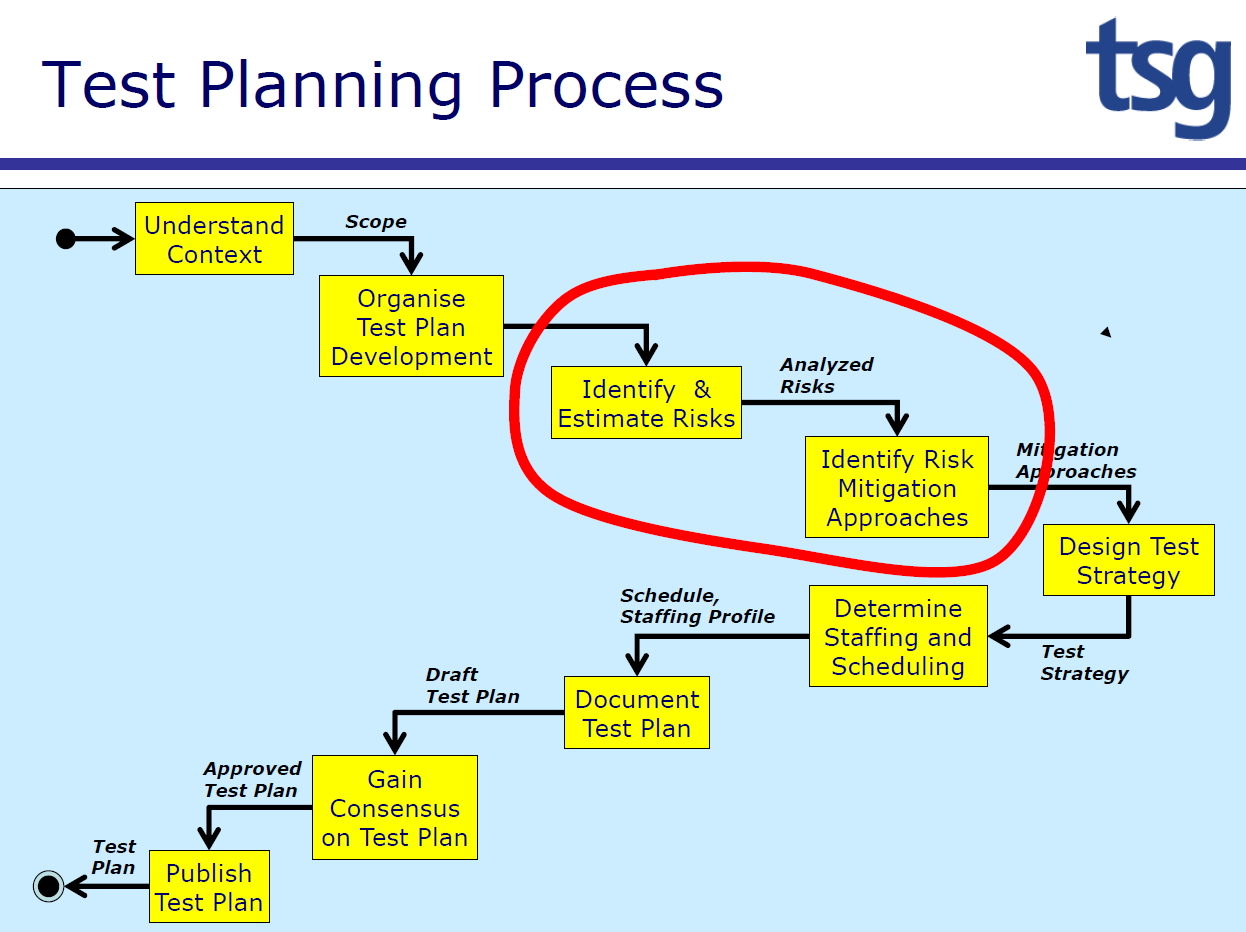The proponents of ISO Standard 29119 proudly claim that they have received and responded to “literally thousands” of comments during the process of drafting the standard. So I thought it might be interesting to examine how one component of the basic model has changed or evolved through the course of its development.
Here’s a screenshot of a diagram that illustrates the test planning process, taken from a presentation given in 2009.

(Source: http://in2test.lsi.uniovi.es/gt26/presentations/ISO-29119-Javier-Tuya-PRIS2009.pdf, accessed September 1, 2014)
Here’s another diagram illustrating the test planning process, presumably reflecting input from all of those thousands of comments (plus changes due to the rise of smartphone and mobile technology, the consequences of the financial crisis, and the emergence of tablet computing) from a presentation from 2013:

(Source: http://www.siliconindia.com/events/siliconindia_events/presentation/P2KVy7Yu.pdf, accessed September 1, 2014)
But maybe that second presentation was based on an interim draft. Let’s look at something that should reflect the published standard, as it came from Stuart Reid, the convenor of the standard working group, in March 2014, after the standard was published.

Source: http://btdconf.com/session/225/ISO_29119:_The_New_International_Software_Testing_Standard, accessed August 21, 2014 by Huib Schoots)
Perhaps the model developed and presented by someone in 2009 was so universally representative of software test planning that it has been able to withstand the critique and feedback from a wide and diverse community of thousands of testers over four years, with only minimal and inconsequential changes to the text in the diagram. Or perhaps substantial disagreement with this model was ignored, suppressed, or subjected to a process of consensus based on attrition, as I alluded to in an earlier post.
Which do you think is more likely?
Please, sign the petition to stop ISO 29119.
I think they changed it to estimate because of the fuss around the correct spelling of analyse
Unfortunately any discussion of what is contained within ISO/IEC 29119 will always be immediately dismissed by its chief proponents and defenders since anyone who is not such will more than likely find the $900 USD buy in to prohibitive. This is a common tactic amongst groups wishing to maintain their intellectual work as arcane and obtuse. Only people who are willing to make a great sacrifice of money, time, possessions, personal relationships, or some combination of any are allowed access to the “secret teachings.” Everyone else who dares to comment on what little leaks out is quickly dismissed as not knowing what they are talking about. To further burnish this practice, the full weight of the group’s collective fury is always reserved for anyone who gains access to the secret teachings and divulges them to the uninitiated. They are branded as heretics and treated as such.
I see many of the same practices with this super-group of the followers of ISO/IEC, IEEE, and BSC recently created.
So, let me get this straight? At $554 to purchase the currently published portions of the standard, with “literally thousands” of comments meaning at least 2,000, unless the bulk of the comments came from one particularly cranky individual, ISO has already brought in more than $1 million US. So again, the purpose of this standard is about quality, right?
Michael replies: At some points in their development, drafts of the standard are free to reviewers. And then they’re not. That’s progress too!
Is there meant to be some significance behind arranging a linear sequence of steps into a sideways V layout?
@Scott: Having read a draft of the document, I suspect the V layout is only to get it to fit on a printed portrait page.
[…] Blog: An Example of Progress in the Drafting of ISO 29119 – Michael Bolton – http://www.developsense.com/blog/2014/09/progress-in-drafting-iso29119/ […]
@Curtis Stuehrenberg
You make ISO 29119 sound *exactly* like Scientolgy there.
[…] significant impact on our profession. Tone policing doesn’t address the actual disagreement. Intellectually eviscerating the content and arguments is simply waved away. We could talk more about compliance, […]